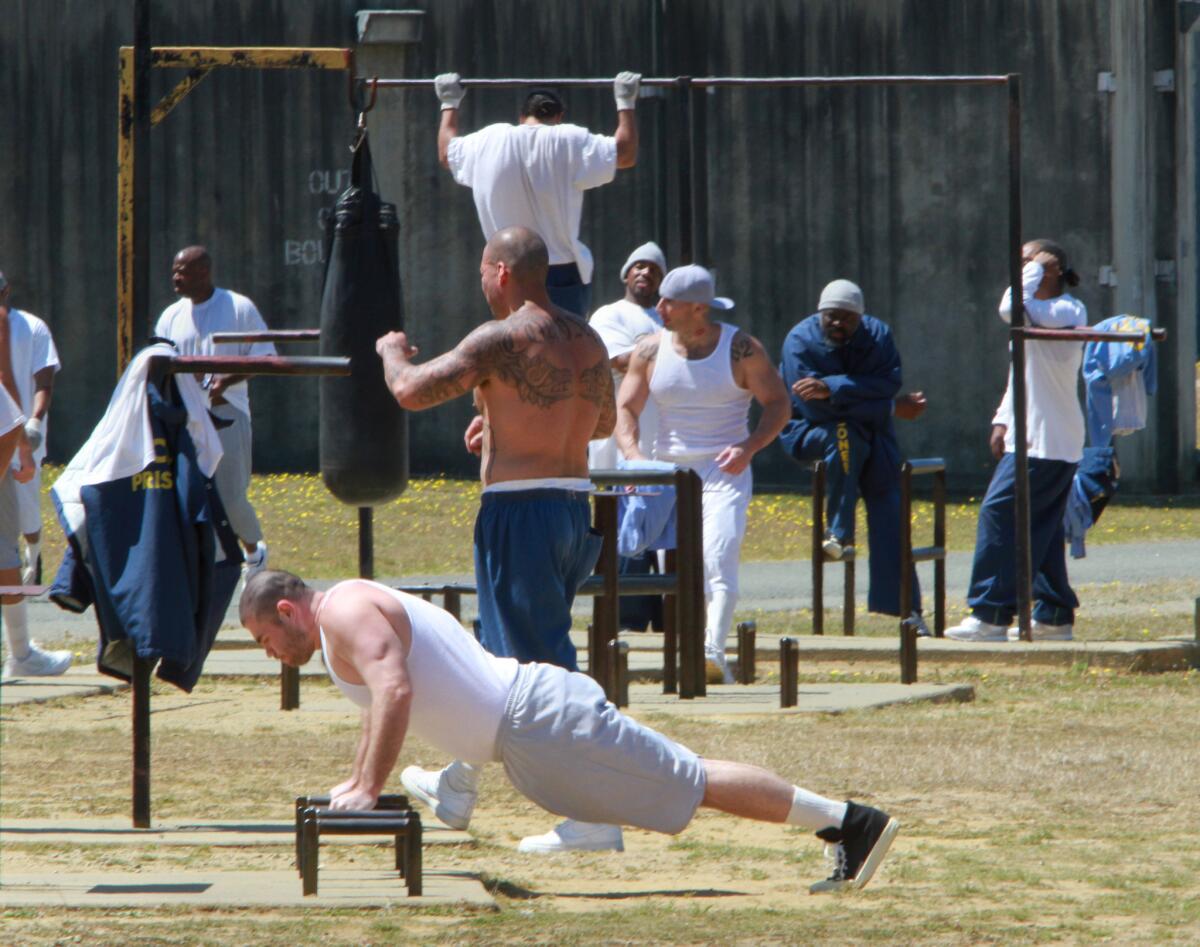Editorial: There is no justice in prisons’ race-based punishment

- Share via
The incident in 2006 was in some ways typical: A group of inmates at High Desert State Prison near Susanville attacked two corrections officers, and prison officials responded with a race-based lockdown, keeping African American prisoners confined to their cells for 14 months.
Governmental discrimination by race is, of course, generally banned in the United States, but California prisons had long been an exception. Why? Prison officials explained that they were responding to the reality that was presented to them: Many inmates are affiliated with gangs, and gangs generally self-segregate by race. In prisons, where tensions can run high and are intensified by overcrowding, officials have said they do what they must to prevent isolated incidents of violence from becoming large-scale race riots. At High Desert, the practice after an incident of violence was to lock down all the members of the race of the perpetrators.
Racial segregation and discriminatory treatment of populations by race are, prison officials argued, important tools for combating violence. Squeamishness about such responses was a luxury afforded to outsiders who didn’t have to deal with the reality of prison conditions.
In fact, though, racial segregation is at best a temporary option to quickly defuse violence, but unnecessary and corrosive as an ongoing policy; and race-based punishment is an evil that goes to the heart of the American experience and cannot be countenanced in the justice system. In the High Desert incident, many inmates lost the opportunity to exercise outdoors or participate in rehabilitation programs for more than a year, not for anything they had done but because they were of the same race as inmates who had perpetrated violence.
Inside prison walls, just as outside, people should expect that they will be treated according to their actions and not be made to pay for the transgressions, real or perceived, of others of the same race or ethnicity. Society’s failure to abide by that precept is intertwined with the history of crime and punishment and is exacerbated when race-based policies govern prison populations.
It is true that many gangs in California prisons are race-based, which makes correcting the problem challenging — but not impossible. Under a proposed settlement of a class-action suit stemming from the High Desert lockdown, privileges are to be withheld or granted prisoner by prisoner, based as much as possible on individual conduct rather than on broad categories such as race.
That’s as it should be. Prison officials have a duty to preserve the safety of their inmates and employees, but they also have a duty to ensure that even inmates are treated according to their actions and not by the color of their skin.
Follow the Opinion section on Twitter @latimesopinion
More to Read
A cure for the common opinion
Get thought-provoking perspectives with our weekly newsletter.
You may occasionally receive promotional content from the Los Angeles Times.









